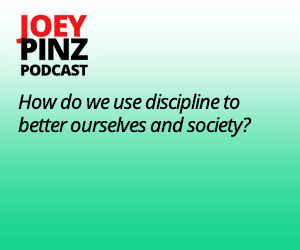Channel partner investments should deliver a competitive advantage to your business. How you establish and proceed with your partner channel management defines your lead in the market. For sure, more companies acknowledge the significant role that a channel and its channel partners play in the success of a business. As such, more firms also leverage partners as part of their marketing strategy. If you are also looking into this, then you must realize that having effective channel management is more crucial than before.
What Is Partner Channel Management?
To better understand how to succeed, you must first understand what partner channel management is. Another name for is channel partnership, wherein two companies enter into an agreement for one company to market and sell the product, service or technology that the other company created or manufactured. For most partners, this is co-branded for optimum benefits on both partners.
Unfortunately, many firms still do not achieve breakthroughs with their channel partnerships. It is said that as much as 70% of partnerships fall short of hopes and expectations for both channel partners. But how do you determine that your strategy is failing or starting to?
Signs that Your Marketing Plan is Under-Performing
To know that your strategy is starting to fail, here are 5 signs to look out for.
- Weak Performance: Compared to other top-performing channel partners, your partnership is behind on marketing and sales.
- Poor Alignment: Collaborations between the teams of each partner must be synchronized including how both parties handle sales and the partner program. If not, that’s poor alignment indeed.
- Weak Commitment: There’s a lack of effort and support in promoting and selling the product and/or lack of support for incentives for the other partner to sell the product or service.
- Unclear ROI: If both partners don’t know and acknowledge the worth of each other’s products or services and their combined product as well.
- Passive Execution: There is a noted lack of excitement and active participation in selling the business or making the partnership work for both partners.
You must realize that a strong channel organization directly correlates to driving positive results and convincing new clients. Usually, the approach is the primary cause of problems in a company. Once you realize this, you should ensure to focus on winning your channel partners over to your side and boost good partner channel management.
Strive to establish the ideal partner approach so you can drive performance to be in line with the set partnership objectives. It must also adhere to the guiding principles of behavior and strengthen the partnership.
6 Rules Of Partner Channel Management
To ensure that your sales channels are performing their maximum, try incorporating these rules in your partner channel management.
1. Create An Integrated Partner Plan
More and more channel captains realize how valuable partner planning is. As a good foundation, partner planning requires you to set your channel strategy. This includes determining your ideal channel partner and the partner tactics to employ so you can provide the best service to your clients. The next step is to plan the ideal distribution strategy that will be most effective for your business. Here, you have to scale market coverage and include some company resources to help establish your product, service or technology. It’s a plan that is best executed by local field offices.
Five Areas to Focus On When Creating A Plan
- Determine the company objectives that depend on partner channel management
- Evaluate your current route-to-market strength
- Know your need and ability to scale across various dimensions
- Set your growth tactics for each target result
- Distribute accountability throughout your organization
4 Channel Strategies For Growth
- Recruit – Have partners to your current route-to-market.
- Develop – Create and establish a new route-to-market from new and existing channel partners.
- Grow – Expand or extend the capacities of your current channel partners and resources to expand into other target markets and product offerings.
- Prune – Increase efficiency of the partner channel management by redirecting resources to better-performing projects.
You’ll most likely have to employ a different strategy for each locale, customer section or product offering. It is best to prioritize your internal goals including long-term growth by way of a new product line or short-term as in the form of annual revenue targets.
Going through these processes can be tedious. However, these will ensure that you achieve team alignment for your channel planning. These help clarify accountability and emphasize the need for alignment of your shared goals. In the end, you will be removing ambiguity and promoting clarity in all aspects of the business and partner channel management.
2. Build A Partner Road-Map
Your channel development process must aim for a comprehensive and effective partner organization. A partner organization is a map of all channel partnerships made with your company. So, they essentially are your firm’s extension. As such, channel captains must truly understand the organization including how to make adjustments for maximum performance.
First, have a partner road-map aiming for capacity planning addressing the number of channel partners that you can have as well as partner scoring relating to which channel partners best fit your needs.
Capacity planning plus partner scoring serve as the two sides of a partner’s performance. On one hand, capacity planning checks the number of partners your company has and determines gaps that can hinder the ability to meet company goals. On the other hand, partner scoring evaluates each channel partner firm, its potentials and determines its performance whether it is delivering its share to the partner channel management.
Determine your individual firm road-map by examining these 5 Cs of partner performance.
- Contribution – Determine the sales velocity of each channel partner. Sales velocity refers to the speed that a company convert leads into sales plus their value over a period of time.
- Consumption – This checks the effectiveness of a channel partner at driving customer usage and adoption. As contribution represents income, consumption refers to the increase in customer’s lifetime worth by affiliation with your product or service.
- Coverage – Refers to the market that a partner encompasses. Your organization’s capacity is affected by the kids of partners and the number of partners you have for each section. In addition, partner attributes including business models, clientele, and solutions provided also impact that capacity. You have to realize that the proper partner coverage paves your way to more expansion to new markets.
- Capability – This refers to the combination of the channel partner’s knowledge and how effective these are when bearing with your target market. A partner’s capability is critical in building a growth engine.
- Commitment – This involves the consistency and predictability of a partner’s results. Since many partners partner with multiple vendors, your partner’s loyalty is critical to your channel revenue. His or her commitment will impact your growth curve and success.
Here are tactics you can use after developing your road-map and organization:
- Generate actionable and realistic targeting models for partner recruitment and development
- Map key credential programs for full organization training and facilitation
- Make sure of a balanced engagement based on the set business models, motivations and performance requirements
- Make a predictive model for program investment
- Confirm partner business propositions on all partner sections
3. Conduct Value Proposition Evaluations
A value proposition shows the quantitative and qualitative boosts that a channel partner receives when selling your company’s products or services. As a result, these statements serve as competitive filters that determine who among the vendors will they sell and support.
Remember that a convincing partner value proposition has these 3 elements:
- Relationship Alignment: This becomes evident when partners see the long-term value in the partnership. A relationship alignment is seen when a vendor fits with the partner’s strategic objectives. Other considerations include real or perceived reputation and satisfaction on past engagements.
- Market Momentum: Partners naturally support products or services that have high demands and fast-moving. Your company’s market momentum is a mixture of market share, customer demand and leadership position.
- Partner Economics: This refers to the financial return or ROI from the vendor relationship. It incorporates any profits earned from the partnership, initial outlay costs and other benefits.
All companies have soft spots or weaknesses. This is also true with partner business propositions with partner sectors. However, understanding your company’s strengths and weaknesses allows you to have a better handle of things.
In addition, you must understand your competitor’s business value propositions. This way, you can benchmark your business proposition to that of your close competitors for each prospective partnership.
After assessing your weak spots, here are actions you can do to improve your perceived value:
- In case of weak market momentum, reposition your core offering in the market or enhance the gain for a potential partner.
- If your prospective partners don’t understand your value, re-assess your targeting or messaging to correct this.
- In case you are not driving value to your channel partners compared to your competitors, improve your partner economics while ensuring that you maintain your margins to run your business. Perhaps you can reduce initial set-up costs or provide sales and marketing support.
To be continued on next week’s post
Other blogs
Managing Channel Conflict – Kinds, Causes and How To Overcome Channel Conflict


